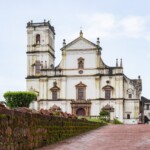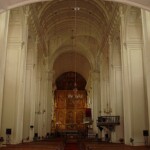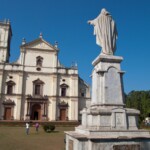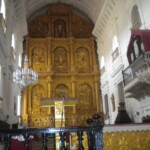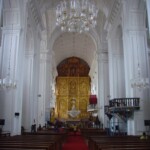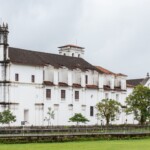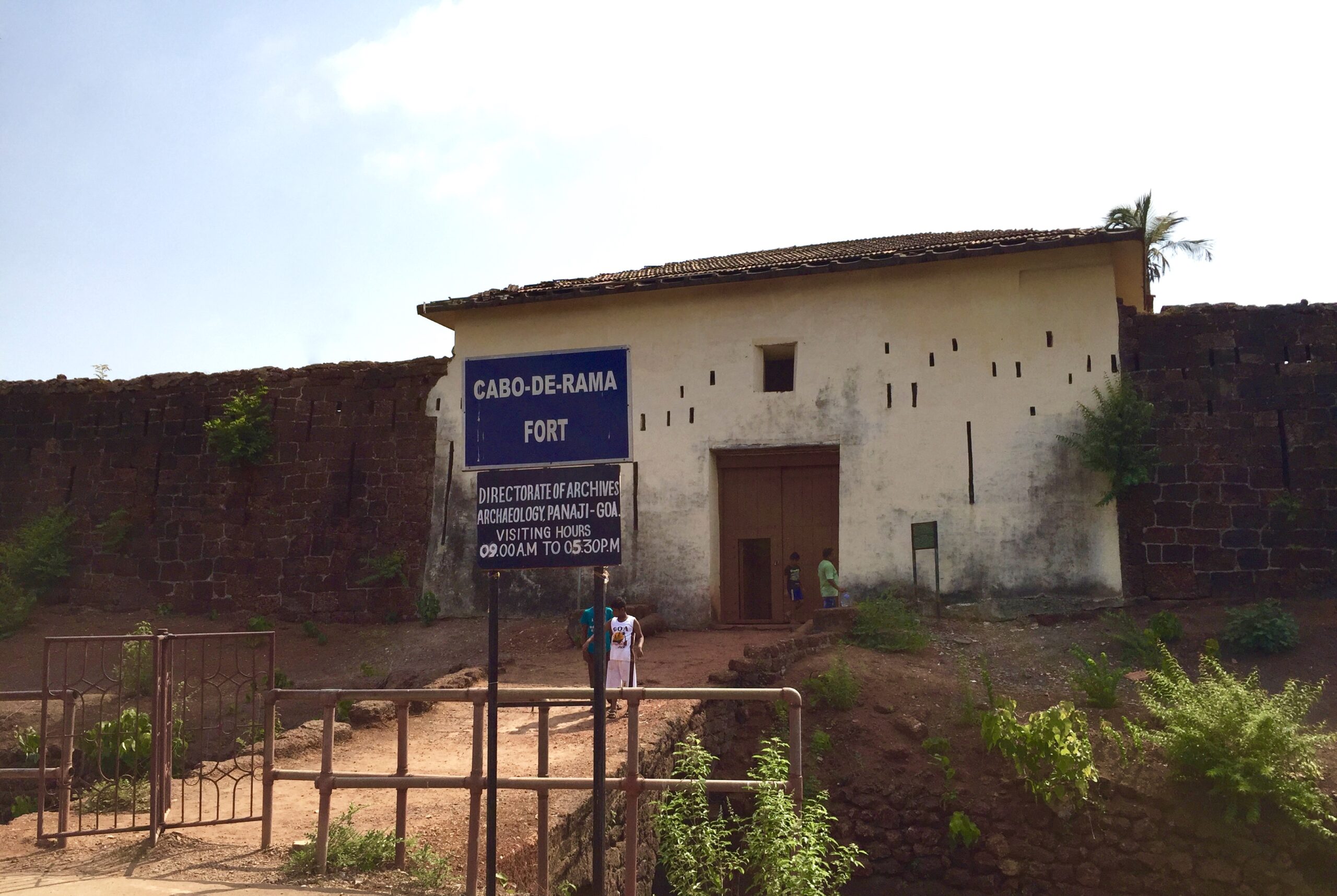
The Sé Catedral de Santa Catarina, widely known as Se Cathedral, is a grand monument that reflects the rich Portuguese legacy of Old Goa, India. Serving as the principal church of the Archdiocese of Goa and Daman, it also holds the esteemed title of being the seat of the Patriarch of the East Indies. This iconic cathedral is one of the prominent structures included in the UNESCO World Heritage Site group known as the Churches and Convents of Goa.
History of Se Cathedral
The Se Cathedral is a monumental symbol of Portuguese conquest and religious fervor in Goa. Its history reflects the establishment and spread of Christianity in the region, as well as the grandeur of Portuguese colonial architecture.
1. Origins of the Cathedral
- 1510: The roots of Se Cathedral date back to the Portuguese victory over the Muslim ruler of Bijapur, led by Afonso de Albuquerque. The battle was won on 25th November, the feast day of St. Catherine of Alexandria, prompting the dedication of the cathedral to her.
- To commemorate this victory, the Portuguese decided to build a magnificent church at the heart of Old Goa, which was then their colonial capital.
2. Construction Timeline
- 1552: The idea for the cathedral took shape during the reign of King Dom João III of Portugal.
- 1562: Construction began under Governor George Cabral.
- 1619: The structure was completed after nearly six decades of work.
- 1640: The cathedral was formally consecrated.
3. Religious and Political Importance
- The Se Cathedral became the seat of the Archbishop of Goa, reflecting its central role in the Roman Catholic Church in Asia.
- It was also the epicenter of the Portuguese missionary campaign, used to coordinate Christian expansion throughout the East.
- The cathedral stands as a symbol of the Christianization of Goa and the Portuguese assertion of faith in their colonies.
Architecture of Se Cathedral
The Se Cathedral, also known as Sé Catedral de Santa Catarina, is a stunning example of Portuguese-Manueline architecture, with elements of Gothic, Tuscan, and Baroque styles. It is one of the largest churches in Asia and represents both grandeur and spiritual devotion.
Key Architectural Features
1. Dimensions and Layout
- Length: 250 feet
- Breadth: 181 feet
- Height: 115 feet at the front façade
- Plan: Cruciform layout with a long nave, transept, and chapels on either side
2. Façade
- Broad and majestic, marked by three entrance doors
- Five large bells, including the Golden Bell (famous for its rich tone)
- Originally had two towers, but only one survives; the other collapsed in the 18th century
3. Interior
- The main altar is dedicated to St. Catherine of Alexandria and is richly gilded with scenes from her life
- Behind the main altar lies a reliquary containing relics
Multiple side chapels, including:
- Chapel of the Blessed Sacrament (with intricate gold work)
- Chapel of the Cross of Miracles (linked with a miraculous apparition)
4. Nave and Columns
- The nave is vast, flanked by eight chapels (four on each side)
- Tuscan-style columns support the arches, leading to a high vaulted ceiling
5. Special Features
- Golden Bell: One of the largest in Goa, admired for its deep resonance
- Paintings and Panels: Baroque-style religious art and floral motifs throughout the altars and walls
- Ornate Pulpit: Elaborately carved, used during sermons in the past
- High-arched doorways and windows: Allow natural light, enhancing the solemn yet majestic aura
Significance of Se Cathedral
The Se Cathedral is more than just an architectural marvel—it’s a spiritual, historical, and cultural symbol of Goa’s colonial legacy and religious transformation. Here’s why the cathedral holds immense significance:
1. Religious Importance:
- Dedicated to St. Catherine of Alexandria, the patron saint of Christian victory.
- It is the seat of the Archbishop of Goa and Daman, making it the central church of the Archdiocese.
- Plays a key role in Catholic religious life in Goa, hosting major feasts, including the Feast of St. Catherine (Nov 25).
- Houses several altars and chapels where masses and sacraments are regularly held.
2. Symbol of Portuguese Victory
- Built to commemorate the Portuguese conquest of Goa in 1510 under Afonso de Albuquerque.
- Its grand construction symbolized the triumph of Christianity over Muslim rule at the time.
- A statement of the Portuguese colonial power and their religious mission in Asia.
3. Architectural Legacy
- One of the largest churches in Asia, reflecting Portuguese-Manueline architecture at its best.
- Features rare elements like the Golden Bell, known for its clarity and rich sound.
- Showcases a fusion of European design with Indian craftsmanship, representing cultural exchange.
4. UNESCO World Heritage Site
- Part of the “Churches and Convents of Goa”, listed by UNESCO for its outstanding cultural value.
- Preserved as a global heritage monument, attracting scholars, architects, and tourists worldwide.
5. Cultural & Historical Symbol
- A major tourist attraction and pilgrimage site in Old Goa.
- Represents the golden age of Portuguese rule in Goa, when Old Goa was a thriving capital.
- Reflects the spread of Christianity through missionary activities in Asia, especially by Jesuits and Franciscans.
6. Artistic & Spiritual Beauty
- Known for its stunning altars, woodwork, and religious paintings.
- Offers a peaceful and contemplative environment, drawing both the faithful and lovers of art and history.
Images of Se Cathedral
Visiting Information
Here’s a complete guide for visitors to the Se Cathedral, one of the most iconic churches in India and a UNESCO World Heritage site.
1. Timings:
- The Se Cathedral in Old Goa is open to visitors daily from 7:30 AM to 6:00 PM, including weekends and public holidays.
- The last entry typically allowed around 5:45 PM.
2. Best Time to Visit:
- Morning (before 11 AM) or late afternoon (after 4 PM) for pleasant weather and fewer crowds
- November to February is ideal due to cool, dry weather
3. Mass Timings:
- Vary by day and occasion
- Weekdays: Generally at 7:30 AM
- Sundays & Feast Days: Masses in Konkani, English, and occasionally Portuguese.
4. Entry & Rules:
- Entry Fee: Free for all visitors.
- Photography: Allowed (without flash); be respectful of ongoing services.
- Dress Code: Modest clothing (cover shoulders and knees); no hats or caps inside.
How to Reach Se Cathedral
1. By Road:
- From Panaji: Distance: ~10 km, Travel Time: 20–25 minutes, Route: Via NH748
- From Vasco da Gama: Distance: ~25 km,Travel Time: 40–45 minutes,Route: Via NH66 and NH748
- From Mapusa: Distance: ~18 km, Travel Time: 30–35 minutes, Route: Via NH66
- From Calangute/Baga: Distance: ~25–28 km,Travel Time: 45–50 minutes,Route: Via Chogm Road or NH66
Options:
- Private car, rented bike/scooter, taxi or cab aggregator (e.g., GoaMiles)
- Free parking space is generally available near the cathedral complex
2. By Bus:
- Public and private buses run regularly from Panaji to Old Goa
- Get off at the Old Goa Church Complex stop
- A short walk (3–5 mins) from the bus stop to the cathedral
3. By Train
Nearest Railway Station: Karmali Station (~3 km from Se Cathedral)
From Karmali:
- Take an auto-rickshaw or taxi
- Or walk if you’re up for a short scenic route
4. By Air:
Nearest Airport: Goa International Airport (Dabolim) – ~25 km
From the airport:
- Hire a prepaid taxi, app cab, or rent a self-drive car
- Travel time: ~45–60 minutes
Places to Explore Near Se Cathedral
The Se Cathedral is surrounded by several historical and religious landmarks, all within walking distance or a short drive. Here are the top nearby attractions you should explore:
1. Basilica of Bom Jesus (2–3 mins walk)
- Famous for housing the mortal remains of St. Francis Xavier
- A UNESCO World Heritage Site
- Known for its stunning Baroque architecture
2. Church of St. Francis of Assisi (Next to Se Cathedral)
- Features a beautiful mix of Manueline, Tuscan, and Baroque styles
- Home to a richly decorated interior and religious paintings
- Part of the same complex as Se Cathedral
3. Archaeological Museum of Goa (Next to St. Francis Church)
- Showcases Portuguese and pre-Portuguese artifacts
- Displays sculptures, portraits of viceroys, and religious art
- Ideal for history enthusiasts
4. Chapel of St. Catherine (2–3 mins walk)
- Marks the spot where the Portuguese first entered Goa in 1510
- A simple yet historically important structure
5. Viceroy’s Arch (5 mins walk)
- A grand 16th-century arch built by the Portuguese
- Historically used as the ceremonial gateway to Old Goa
- Features a statue of Vasco da Gama
6. Ruins of St. Augustine Tower and Church (10–12 mins walk)
- Iconic ruins of a once-massive 17th-century church
- The 46-meter tower still stands tall, offering a hauntingly beautiful glimpse into Goa’s past
7. Museum of Christian Art (10 mins walk or 5 mins drive)
- Located at Santa Monica Convent
- Houses a rare collection of Christian artifacts and Indo-Portuguese art
8. Church of Our Lady of the Rosary (7–10 mins walk)
- One of the oldest churches in Goa, built in the late 1500s
- Simple, fortress-like design with historical importance

